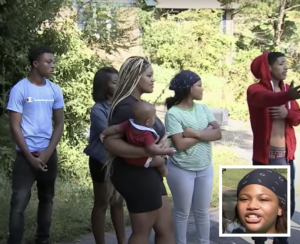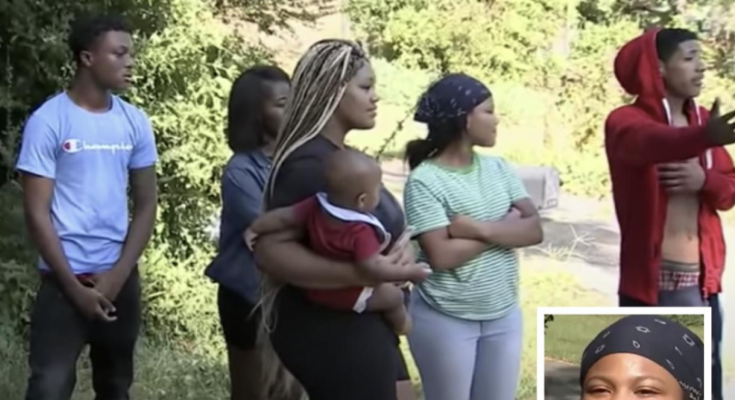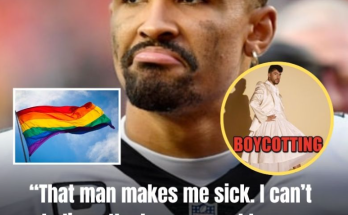
In a quiet Georgia neighborhood, what began as a seemingly ordinary night ended in tragedy when a homeowner opened fire on three masked teenagers who allegedly attempted to rob him. The incident has sparked widespread debate about self-defense, gun rights, and accountability, as the families of the deceased teens demand answers and transparency from law enforcement.
According to the Rockdale County Sheriff’s Office, the event unfolded just before 4 a.m. when three teenagers — two aged sixteen and one fifteen — approached a home in Conyers, Georgia. Investigators say the boys were wearing masks and gloves and were armed. Witnesses reported hearing gunfire as the suspects allegedly tried to rob people in the front yard of the home. When one of the teens reportedly fired first, the homeowner responded by shooting back, striking all three suspects. One teen died at the scene, while the other two were taken to a local hospital where they later succumbed to their injuries.
The homeowner was uninjured and, at least initially, not charged. Authorities stated that the evidence appeared to support a claim of self-defense under Georgia’s “stand your ground” and “castle doctrine” laws. These laws allow homeowners to use deadly force if they reasonably believe they are in imminent danger of death or serious harm. Sheriff officials emphasized that, from what they knew, the homeowner’s reaction was consistent with self-defense — an immediate response to being fired upon.
Neighbors awoke to the sound of gunshots and chaos. One witness recalled hearing a burst of gunfire followed by a pause, then another round of shots. “It was like a war zone,” a nearby resident said. “I looked out my window and saw one of the boys on the ground. He was calling out, saying, ‘I’m dying.’ It was heartbreaking.” The residents called 911, and deputies arrived within minutes to secure the scene.
Despite the apparent clarity from the authorities’ perspective, the families of the teens have been vocal in their grief and outrage. They argue that the story isn’t as simple as the police suggest. “They were children,” one aunt said tearfully. “We want to know what really happened. How did things get to this point?” The families insist they deserve full transparency about the investigation — including whether the teens were shot while retreating and how many rounds were fired.
Many in the community share their unease. Although the homeowner may have been legally justified in using his weapon, the loss of three young lives raises deeper questions about why teenagers would engage in such a dangerous act, and whether there were other ways the situation could have been deescalated. “It’s tragic all around,” one neighbor remarked. “Those kids made a terrible mistake, but now three families are planning funerals.”
Law enforcement officials have confirmed that at least one of the teens was armed and fired first. Ballistic evidence, they say, supports the homeowner’s version of events. However, that has not stopped speculation online and in the community. Some wonder whether all three boys were directly involved in the shooting or if one may have been caught in the crossfire after trying to run. Others question the proportionality of the response — whether the homeowner fired too many times or continued shooting after the threat was neutralized.
The sheriff’s office has stated that the investigation is ongoing and that all forensic evidence, including bullet trajectories and gunshot residue testing, will be carefully reviewed. “It’s still early in the process,” one investigator noted. “We have to let the evidence tell the story.”
Under Georgia’s self-defense laws, homeowners are not required to retreat if they face an immediate threat. If the evidence confirms that the teens fired first, the homeowner would likely be fully protected by the law. But if it emerges that any of the suspects were shot while fleeing, or after the danger had passed, the situation could become more complicated legally.
Family members have organized vigils for the teens, describing them as “good kids who made bad choices.” One mother sobbed as she held a photo of her son, saying, “He wasn’t perfect, but he didn’t deserve to die like this. We just want the truth.” Friends of the boys echoed her heartbreak, recalling that the teens attended local schools and were known for their sense of humor and athletic ability. “They were just young,” one classmate said. “They were supposed to have time to learn from mistakes, not die from them.”
The tragedy has also ignited broader discussion about youth violence and gun culture. Community leaders have called for increased investment in youth mentorship programs, arguing that prevention starts long before such incidents occur. “We have to stop pretending these things happen in isolation,” a local pastor said during a vigil. “These are children picking up guns because they feel hopeless or fearless — and we, as a society, have to ask why.”
For supporters of gun rights, the case reinforces the importance of being able to protect oneself and one’s family. “This man did what anyone would do when someone points a gun at them,” one local resident commented. “You don’t wait to get shot. You defend your home.” On the other hand, critics argue that “stand your ground” laws can blur moral lines and lead to unnecessary loss of life. “Just because something is legal doesn’t mean it isn’t tragic,” another neighbor said quietly.
Investigators have not publicly released the names of the teens out of respect for their families. The homeowner’s identity has also been withheld, citing safety concerns. Authorities have indicated that, unless new evidence emerges, charges are unlikely. However, the families are considering civil action, saying they believe excessive force was used. “We can’t bring our kids back,” one parent said, “but we can fight to make sure this doesn’t happen again.”
The case has drawn national attention, with news outlets highlighting how it reflects the complex intersection of youth crime, gun laws, and the right to self-defense. Some legal experts note that such cases often ignite emotional and political debate. “In Georgia, the law is fairly clear,” one attorney explained. “If someone fires at you on your property, you are legally justified in returning fire. But in the court of public opinion, these situations are never simple.”
In the days following the shooting, the homeowner reportedly expressed shock and sadness about the event. A neighbor who knows him described him as “a quiet, hardworking man who never wanted trouble.” The same neighbor added, “He didn’t ask for this. I can’t imagine what it’s like to take a life, even if it was self-defense.”
As the investigation continues, both sides are united by a single truth: nothing can undo what happened. Three teenagers are gone, and a homeowner must live with the memory of that night forever. The families mourn, the community debates, and the sheriff’s department continues to sift through evidence — each step haunted by the weight of what might have been if just one decision had been different.
In the end, the story is not just about guns or laws, but about people — about fear, choices, and irreversible consequences. It’s about how quickly a single moment can destroy lives on all sides. The incident has left an entire community grappling with painful questions: What leads children to commit such acts? How can homeowners protect themselves without crossing a moral line? And what, ultimately, does justice look like when everyone involved has already lost so much?

